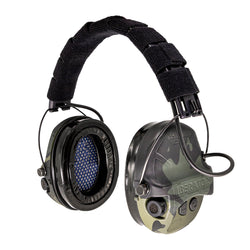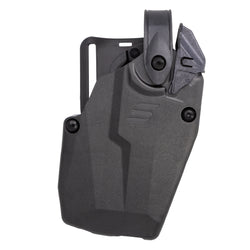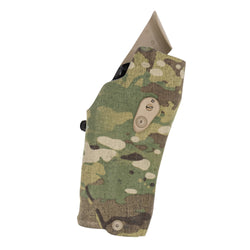I was never a fan of the mouse gun. For many years, I’d tell people to stay away, to go a little bigger. Somehow, I softened on the idea, invested in the concept, and arguably, I’m carrying a mouse gun most of the time these days.
It took a lot of convincing and training to make me feel confident in the concept. I most often carry a KelTec P32, but admittedly, I only do this when I’m by myself. I still grab a bigger gun when I’m with my family and they’re depending on me to defend them.

Still, I trust my life to a mouse gun because I’ve learned how to make it viable. With that in mind, I want to share my knowledge on the subject and help you stay viable with your chosen mouse gun.
What’s a Mouse Gun?
Let’s define the idea, as some people might have different ideas of the mouse gun concept. For the purpose of this article, a mouse gun is a firearm small enough to be pocket-carried but chambering a subcaliber, like .380 ACP, .32 ACP, .32 H&R Magnum, .22LR, etc.

Mouse guns are small, diminutive firearms designed for deep concealment. The majority would be automatics, but some subcaliber revolvers fit the bill. Mouse guns have been around for a long time and have become popular with the rise of concealed carry.
Why Carry a Mouse Gun?
Mouse guns are matters of convenience. Their small size and light weight make them comfy and easy to carry and conceal. You don’t have to dress around your gun. In most cases, you can throw it in your pocket and have a fantastic day.

In some cases, a mouse gun might be the only choice. Certain styles of dress can be prohibitive to concealed carry, and as such, it’s tough not to own a mouse gun if you conceal carry 100% of the time.
Mouse Gun Challenges
What’s the problem with mouse guns? These small firearms face a number of challenges.
The first problem is terminal ballistics. Handgun rounds are already terrible fight-stoppers, and as you get into subcalibers, you run into penetration issues. A defensive round needs to be capable of penetrating deep enough to hit something vital and end the fight—and some mouse gun calibers just don’t get there. Some are worse than others.
Smaller guns also tend to be harder to shoot accurately. They have a small sight radius, which makes shooting accurately with iron sights difficult. Many have very small sights, which are tough to see and hard to align quickly. These guns are generally too small for optics, so we can’t solve the problem that way. In most cases, you can’t mount accessories to mouse guns.
Many of these guns have long, heavy double-action-only triggers. Small guns with heavy triggers are famously tough to maintain a good grip, which makes accurate shooting difficult.
We’re also dealing with limited capacity. Most mouse guns use single-stack magazines that hold six to eight rounds. There are exceptions, but that’s the general rule.

Finally, excessive recoil can make them hard to control. These guns will typically have very small and thin grips, so control can be a major issue when it comes to shooting and “grooving.”
How To Be Viable With a Mouse Gun
With all these problems in mind, how can we effectively defend ourselves with a mouse gun? First, let’s talk about calibers. Some are better than others.
Caliber Selection
In general, the best mouse gun calibers are going to be .380 ACP, .32 ACP, .32 H&R Magnum, and .22LR. These calibers are all capable of penetrating deep enough to reach the vitals of a threat.
Calibers like .25 ACP and .22 Short are less likely to adequately penetrate.

With the .25 ACP, there are some viable loads these days, namely the Buffalo Bore load, but as far as I know, it’s the only one that will penetrate deep enough to be a functional option.
I tend to stay away from the .380 ACP in most mouse guns. Recoil tends to be very intense and downright painful. The only pocket .380 I’d carry is the Bodyguard 2.0. It tends to solve all the Pocket .380 problems.
Projectile Selection
Once you pick the right caliber, we want to discuss the right projectile. These rounds are moving through very short barrels, which can minimize velocity.

Hollow point ammo, the most common defensive projectile choice, relies on velocity to effectively penetrate and expand. Oftentimes, short barrels do not work well with hollow points.
With most calibers, you should pick FMJs, especially with .22LR and .32 ACP. With .32 H&R Magnum, a wadcutter works best. With something like the .380 ACP, you’d have to be very load-selective to get the right projectile that can both penetrate and expand.
Holster Selection
If you are going to carry a mouse gun, you should take advantage of the gun’s strengths. Mouse guns drop right in the pocket, and with something like the Model 25 pocket holster, they can be carried safely and competently. Pick a good holster for pocket carry that keeps the gun disguised and easy to draw.

With pocket carry, you can pre-stage your draw by placing your hand in your pocket without ever alerting a potential threat. With your hand already in position, you’ve solved the first part of the draw without telegraphing anything. My fastest draws come from a pre-staged pocket draw, and my fastest Bill Drill comes from a pocket-carried position.
Don’t just throw a gun in a purse or bag and call it a day. That leaves you with a gun that’s hard to shoot, slow to access, and it’s unlikely you’ll train to access it. Instead, carry it somewhere on your body where it’s fast and easy to access.
Train, Train, Train
Lastly, the most important thing you can do is train. Train hard. You need to get a lot of practice with these little guns to be proficient and capable.

You’ll need to train, shoot, and practice as much as you can. This will help you master the gun and get around its inherent flaws. Training with a pocket pistol is critical, more than with other guns.
Shoot drills, shoot at various distances, draw, and practice both dry and live. It’s perishable, so the skill must be refreshed and renewed.
It Takes Forethought and Effort
The wee little mouse gun can be a viable option for self-defense, but it takes a lot of effort, practice, and a little forethought. They are far from perfect, but you can conquer their faults to a point and turn them into a viable defensive option.
While they might be convenient to carry, they might not be convenient to prepare for. Judge the pros and cons and make that decision for yourself.









